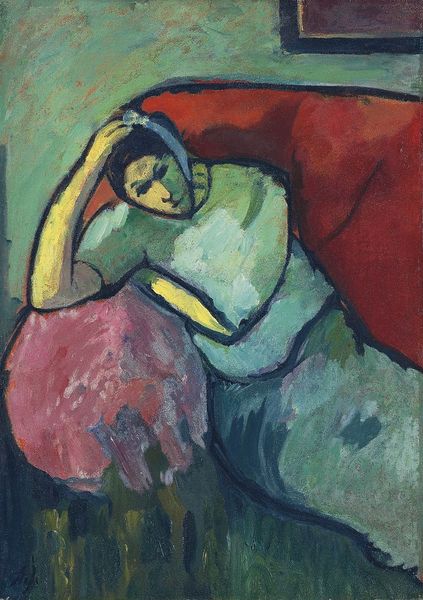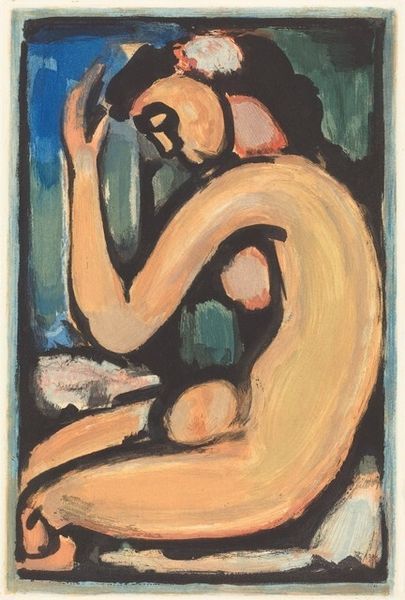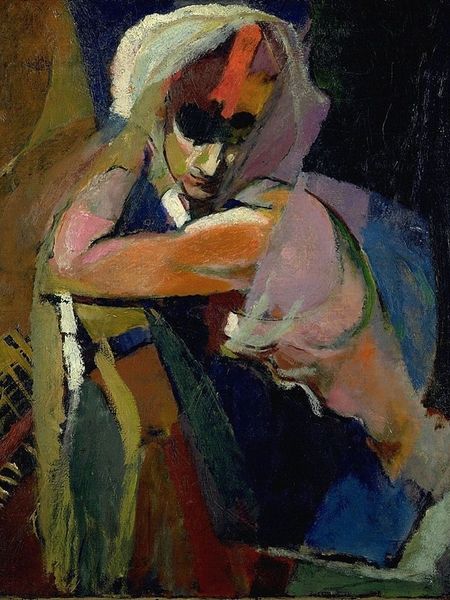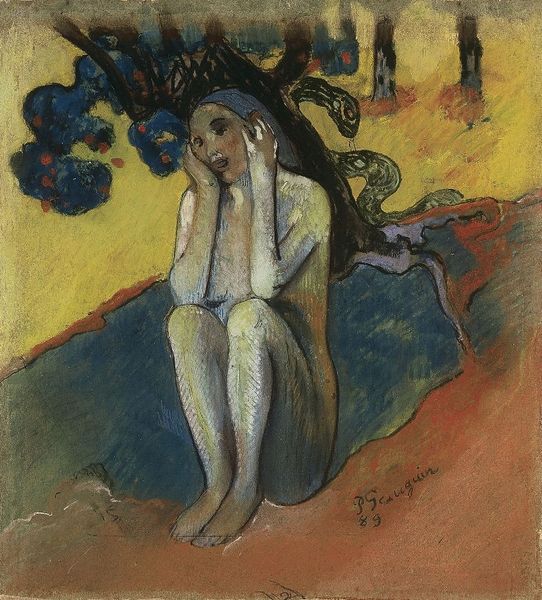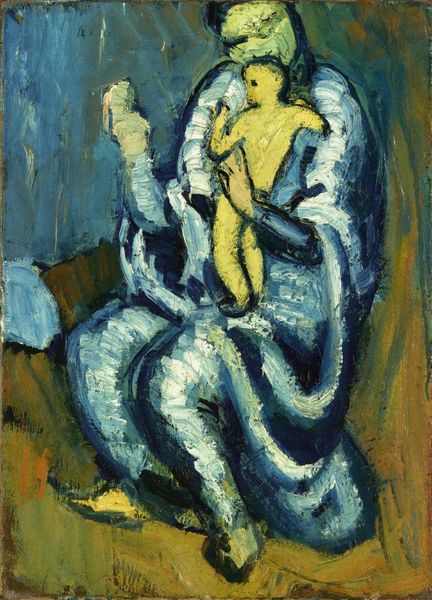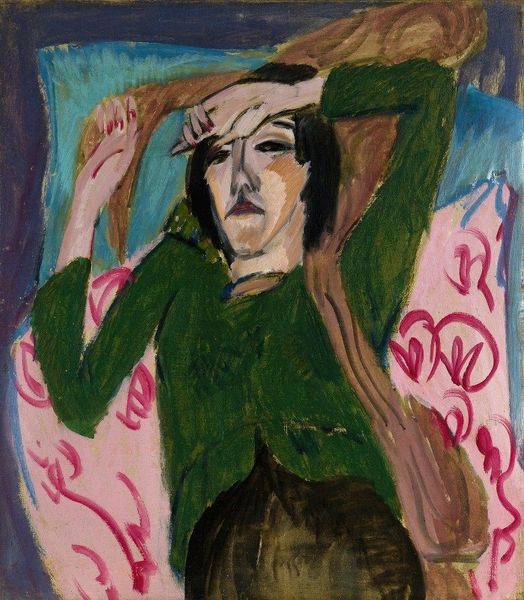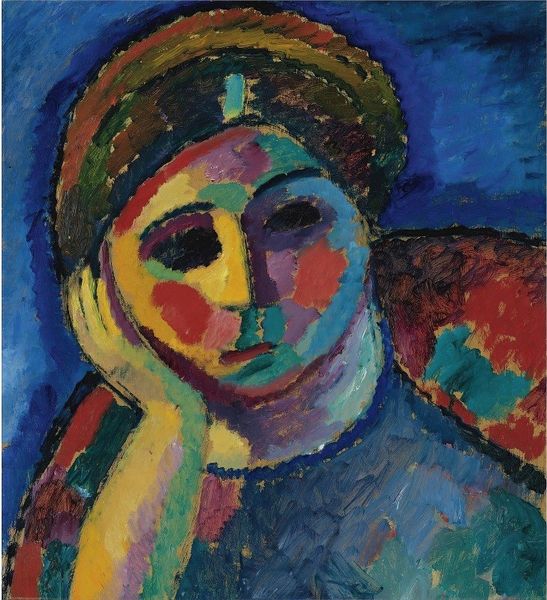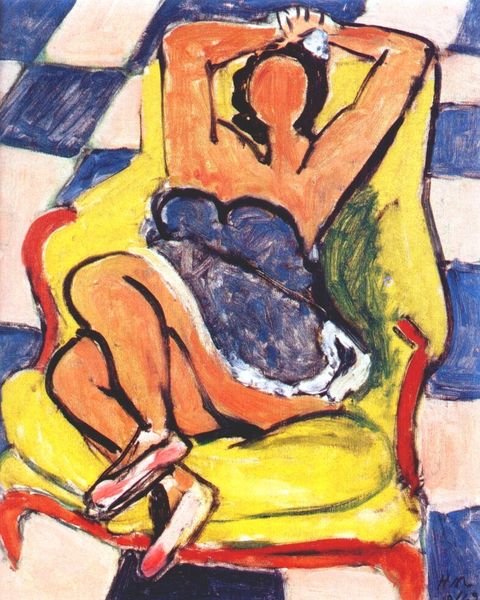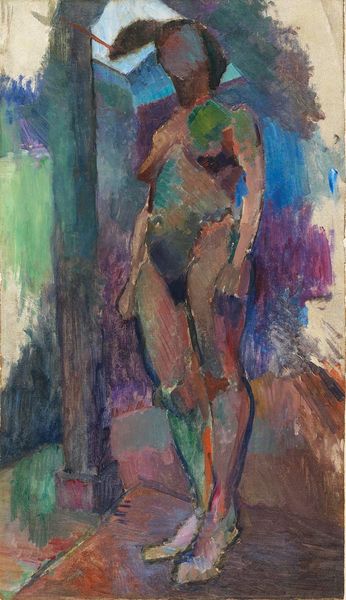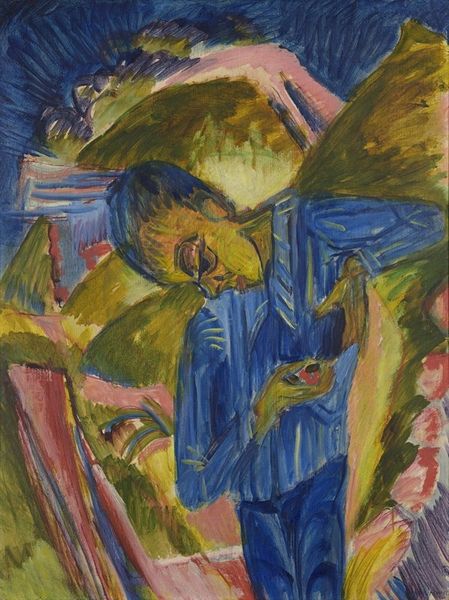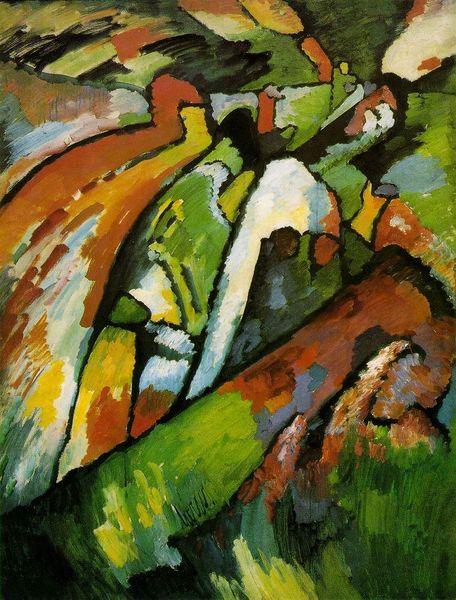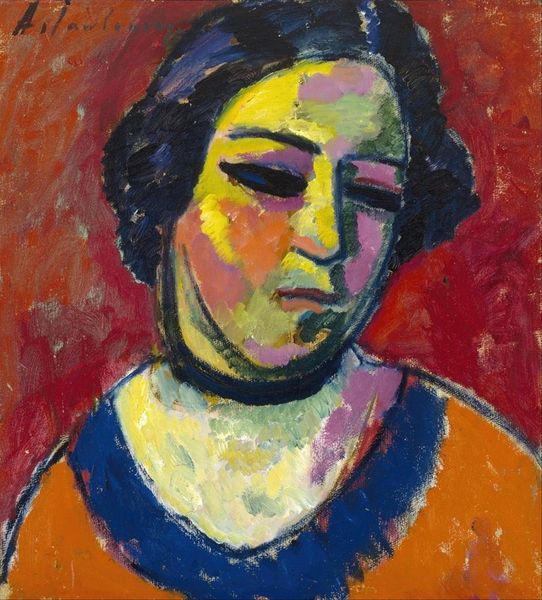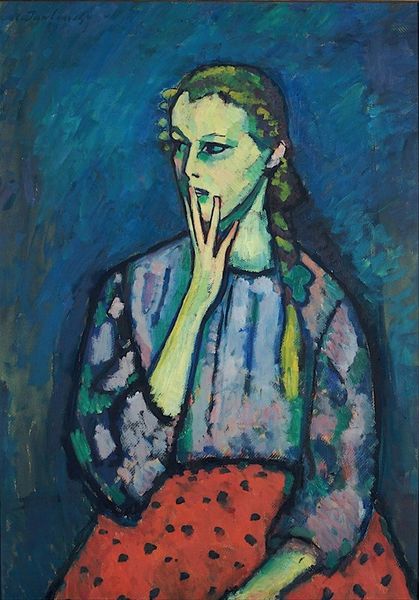
Copyright: Public domain
Editor: Jawlensky's "Nude," painted in 1912 with oils, is arresting. The brushstrokes are so bold and the colors surprisingly vivid. I'm particularly struck by how he uses color to define form. What can you tell me about this piece? Curator: It’s interesting to consider this “Nude” within the historical context of early 20th-century anxieties around sexuality and representation. The Fauvist and Expressionist movements, to which Jawlensky aligned himself, were pushing against academic traditions, and challenging bourgeois notions of beauty and decorum. Notice how the seemingly distorted form and heightened color disrupt conventional representations of the female nude. How do you think the public might have reacted to such a portrayal at the time? Editor: I imagine it would have been considered quite radical! The colors alone scream rebellion. Was Jawlensky intentionally trying to provoke a reaction? Curator: Possibly. Artists like Jawlensky were engaging with a broader shift in visual culture. They aimed to move beyond mere imitation and express inner states. They also explored primitivism. There’s a dialogue happening here with other art forms, including non-Western art, impacting the politics of the imagery. Museums played a role by either embracing or rejecting these avant-garde expressions. Editor: So, the shock value wasn't just about the nude itself, but the way it was painted and the challenge it posed to artistic conventions. That’s a whole new perspective. Curator: Exactly. This "Nude" is less about an idealized form and more about the artist's subjective experience and the changing role of art within society. Editor: I never thought about museums shaping the reception, that’s brilliant. I’ll definitely keep that in mind next time I look at art from this period. Thanks!
Comments
No comments
Be the first to comment and join the conversation on the ultimate creative platform.
